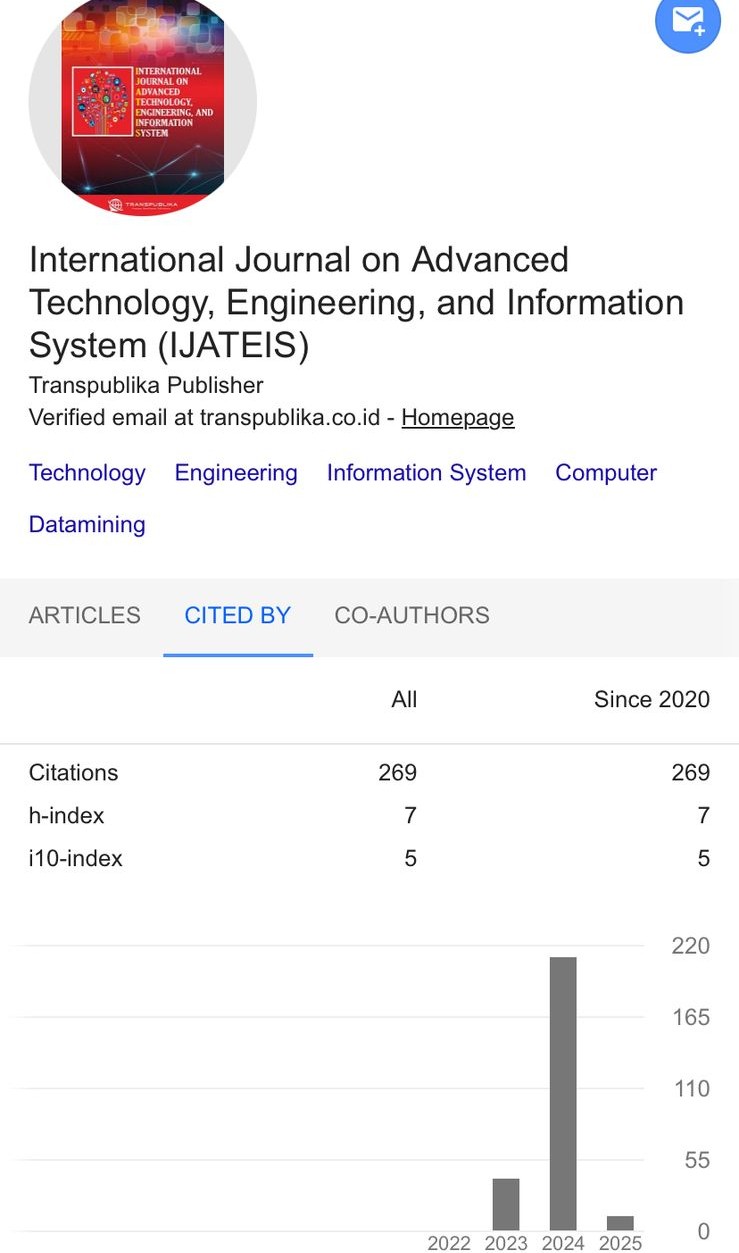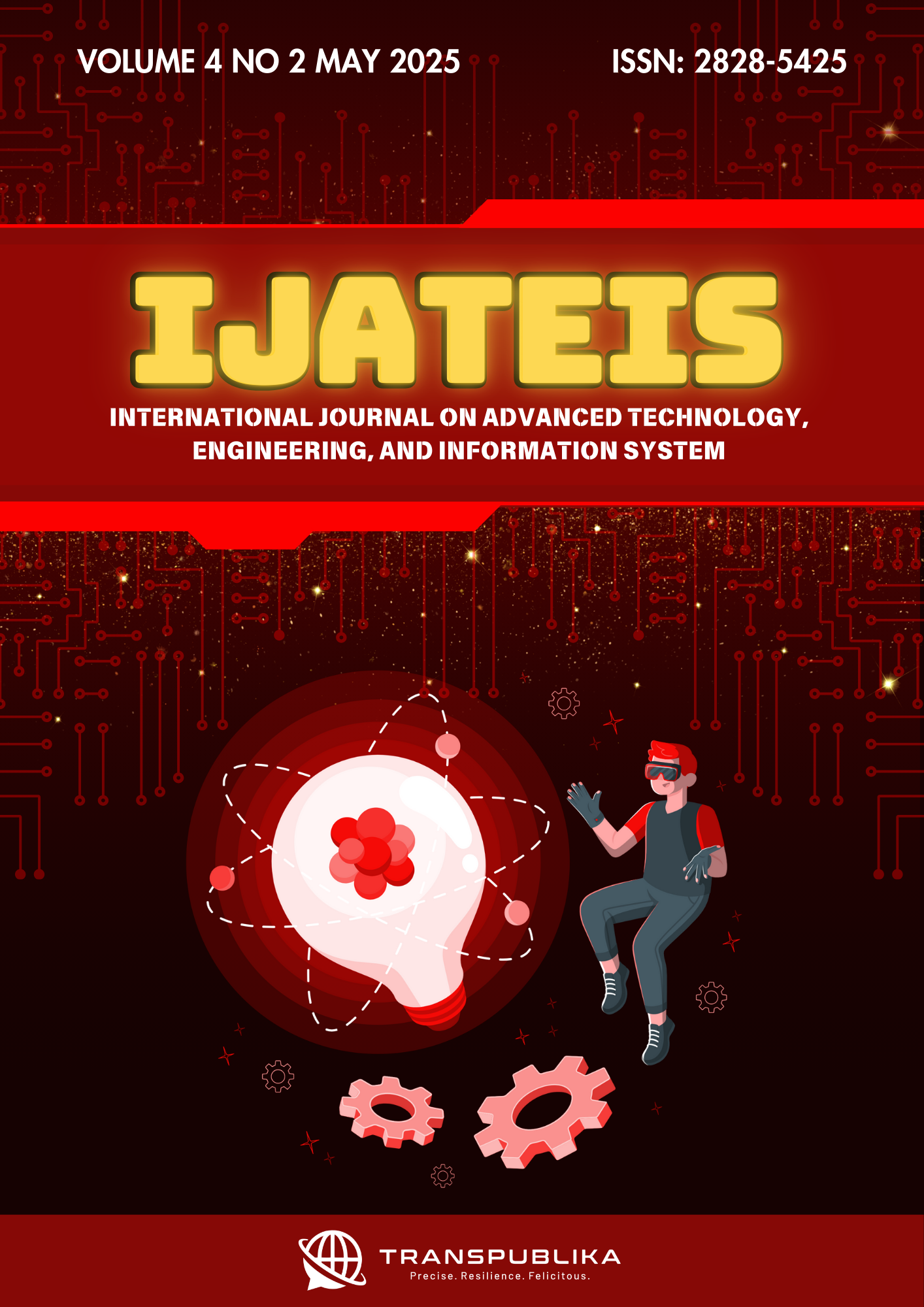Sound Source Localization: A Survey
Main Article Content
Hatice Tombul Çalışkan*
Hacer Karacan
In modern defense systems, there is a growing demand for technologies that detect and track threats without revealing the observer’s position. Sound Source Localization (SSL) fulfills this requirement by passively estimating the position of sound-emitting targets using spatially distributed microphone arrays. Unlike active sensing systems, SSL operates solely on incoming acoustic signals, extracting location information from time delays, amplitude differences, or phase shifts. This survey provides a structured review of recent studies, covering both classical SSL methods (e.g., TDOA, GCC-PHAT) and artificial intelligence (AI)-based models (e.g., CNNs, RNNs). Classical techniques offer low computational complexity and reliable spatial resolution under ideal conditions but often degrade in noisy or reverberant environments. In contrast, AI-based approaches exhibit higher adaptability and robustness to environmental variability, though they require substantial labeled data and computational resources. Moreover, the performance of SSL systems is closely tied to microphone array geometry: while linear arrays are simple and widely used, circular, spherical, and irregular configurations provide better angular coverage and enable 3D localization. The review concludes that SSL performance is highly application-dependent, and no single method is universally superior. Hybrid approaches that combine signal processing with machine learning, as well as adaptive array designs, emerge as promising directions for improving SSL accuracy, robustness, and scalability in real-world scenarios. The comparative analysis result also underscores that optimal SSL design hinges on a trade-off between algorithmic complexity, environmental conditions, and array geometry, with hybrid methods offering a viable path forward.
Al-Sheikh, B., Elshebli, A., Al-Assaf, A., Almashaqbeh, S., Alrawabdeh, W., Al-Tahat, A., Baker, A. A., Batayneh, J., & Jabra, F. (2013). Sound source direction estimation in horizontal plane using microphone array. 2013 IEEE Jordan Conference on AEECT.
Ameran, H. L. M., Jumaidin, E. J. M., Rahim, R. A., Rashid, W. N. A., Mohamad, M. M., Hashim, H., Zakaria, Z., Shaib, M. F., & Marwah, O. M. F. (2015). Velocity measurement simulative study of twin plane ECT using advanced cross correlation technique. ARPN Journal of Engineering and Applied Sciences, 10(20), 9556–9561.
Amundson, I., & Koutsoukos, X. D. (2009). A survey on localization for mobile wireless sensor networks. In Proceedings of the 2nd International Conference on Mobile Entity Localization and Tracking in GPS-less Environments, Orlando, FL, USA.
Benesty, J. (1999). Adaptive eigenvalue decomposition algorithm for passive acoustic source localization. The Journal of the Acoustical Society of America, 107(1), 384–391. https://doi.org/10.1121/1.428436
Birinci, I. Y., & Leblebicioğlu, K. (2006). Optimum placement of microphone array for sound capture using genetic algorithms. In Proceedings of the 2006 IEEE 14th Signal Processing and Communications Applications Conference
Boztas, G. (2022). Sound source localization for auditory perception of a humanoid robot using deep neural networks. Neural Computing and Applications.
Brutti, A., Omologo, M., & Svaizer, P. (2008). Comparison between different sound source localization techniques based on a real data collection. 2008 Hands-Free Speech Communication and Microphone Arrays, Trento, Italy.
Chen, J., Benesty, J., & Huang, Y. (2006). Time delay estimation in room acoustic environments: An overview. EURASIP Journal on Applied Signal Processing, 2006, 170. https://doi.org/10.1155/asp/2006/26503
Chen, L., Liu, Y., Kong, F., & He, N. (2011). Acoustic source localization based on generalized cross-correlation time-delay estimation. Procedia Engineering, 15, 4912–4919. https://doi.org/10.1016/j.proeng.2011.08.915
Chen, P., & Chen, N. (2022). Sound source localization based on convolutional neural network. In Proceedings of the CCET 2022
Choi, J.-W., Zhang, F., Jo, B., & Yoo, J.-H. (2022). Multiarray eigenbeam-ESPRIT for 3D sound source localization with multiple spherical microphone arrays. IEEE/ACM Transactions on Audio, Speech, and Language Processing, 30, 1483–1495. https://doi.org/10.1109/TASLP.2022.3178824
Correia, S. D., Tavares, S., & Beko, M. (2021). A feed-forward neural network approach for energy-based acoustic source localization. Journal of Sensor and Actuator Networks, 10(2), 29. https://doi.org/10.3390/jsan10020029
Crocco, M., Cristani, M., Trucco, A., & Murino, V. (2016). Audio surveillance: A systematic review. ACM Computing Surveys (CSUR), 48(4), 1–46. https://doi.org/10.1145/2871183
Çontar, E., & Bayrak, H. S. (2008). Sound source localization in microphone arrays using genetic algorithm. Bilişim Teknolojileri Dergisi, 1, 23–33.
Dehghan Firoozabadi, P. A., Zabala-Blanco, D., Palacios-Játiva, P., & Azurdia-Meza, C. (2023). Speaker counting by scattered microphone array based on DOA and eigenvalue estimations in adverse environments. IEEE Xplore.
Dehghan Firoozabadi, P. I., Adasme, P., Zabala-Blanco, D., Palacios Játiva, P., & Azurdia-Meza, C. (2022). 3D multiple sound source localization by proposed T-shaped circular distributed microphone arrays in combination with GEVD and adaptive GCC-PHAT/ML algorithms. Sensors, 22(3), 1011. https://doi.org/10.3390/s22031011
Desai, D., & Mistry, N. (2022). A Review on Sound Source Localization Systems. Archives of Computational Methods in Engineering (2022), 29:4631–4642. https://doi.org/10.1007/s11831-022-09747-2
Dhull, R., & Singh, S. K. (2015). Review on Acoustic Source Localization Techniques [Review Article ]. European Journal of Advances in Engineering and Technology, 72-77.
Dhull, S., Aggarwal, D. S., & Sahu, O. P. (2010). Comparison of time-delay estimation techniques in acoustic environment. International Journal of Computer Applications, 8(6), 1–6. https://doi.org/10.5120/1234-1634
Ekim, P. O., Gomes, J., & Oliveira, P. (2013). RSS-based cooperative sensor network localization with unknown transmit power. In Proceedings IEEE ICC (pp. 2765–2770). https://doi.org/10.1109/ICC.2013.6654905
Farmani, M., Sedighizadeh, M., Tan, Z.-H., & Jensen, J. (2015). Informed TDoA-based direction of arrival estimation for hearing aid applications. In Proceedings IEEE GlobalSIP (pp. 1055–1059). https://doi.org/10.1109/GlobalSIP.2015.7418313
Gong, Z., Zhang, J., & Zhou, F. (2023). Accuracy-enhanced position-sensing via Kalman filter based on received signal strength. In 7th International Conference on Communication and Information Systems.
Guérin, P.-A., Gannot, S., Kowalczyk, K., Laufer-Goldshtein, B., & Ahrens, J. (2022). A survey of sound source localization with deep learning methods. The Journal of the Acoustical Society of America, 151(5), 2801–2819. https://doi.org/10.1121/10.0011809
Gunjal, M. M., & Bhosale, A. A. R. (2020). Improved direction of arrival estimation using modified MUSIC algorithm. In Proceedings of the Fifth International Conference ICCES (pp. 1086–1090). IEEE. https://doi.org/10.1109/ICCES48766.2020.9137904
Hacıvelioğlu, İ., & Demir, H. (t.y.). Akıllı anten sistemlerinde işaret geliş açısı kestirim yöntemleri. TMMOB Elektrik Mühendisleri Odası.
Heydari, Z., & Movahedi, A. (2023). Scalable real-time sound source localization method based on TDOA. Multimedia Tools and Applications, 82, 23333–23372.
Hochradel, K., Hohler, T., Becher, A., Wildermann, S., & Sutor, A. (2019). Three-dimensional localization of bats: Visual and acoustical. IEEE Sensors Journal, 19(24), 11931–11940. https://doi.org/10.1109/JSEN.2019.2937877
Hogg, A. O. T., Neo, V. W., Weiss, S., Evers, C., & Naylor, P. A. (2021). A polynomial eigenvalue decomposition MUSIC approach for broadband sound source localization. In 2021 IEEE Workshop on Applications of Signal Processing to Audio and Acoustics.
Hong, J.-G., Park, C.-S., & Seo, B.-S. (2012). Comparison of MUSIC and ESPRIT for direction of arrival estimation of jamming signal. In 2012 IEEE International Instrumentation and Measurement Technology Conference Proceedings (pp. 1047–1050). IEEE. https://doi.org/10.1109/I2MTC.2012.6229339
Hoshiba, K., Wakabayashi, M., Ishiki, T., Kumon, M., Bando, Y., Gabriel, D., Nakadai, K., & Okuno, H. G. (2017). Design of UAV-embedded microphone array system for sound source localization in outdoor environments. Sensors, 17(11), 2535. https://doi.org/10.3390/s17112535
Huang, Y., Benesty, J., & Elko, G. W. (1999). Adaptive eigenvalue decomposition algorithm for real time acoustic source localization system. In 1999 IEEE International Conference on Acoustics, Speech, and Signal Processing. Proceedings. ICASSP99 (Vol. 2, pp. 917–920). IEEE. https://doi.org/10.1109/ICASSP.1999.758098
Imran, M., Hussain, A., Qazi, N. M., & Sadiq, M. (2016). A methodology for sound source localization and tracking: Development of 3D microphone array for near-field and far-field applications. In 2016 13th IBCAST (pp. 103–108). IEEE. https://doi.org/10.1109/IBCAST.2016.7429859
Jacovitti, G., & Scarano, G. (1993). Discrete time techniques for time delay estimation. IEEE Transactions on Signal Processing, 41(2), 525–533. https://doi.org/10.1109/78.193195
Jekaterynczuk, G., & Pliszka, Z. (2023). A survey of sound source localization and detection methods and their applications. Sensors, 24(1), 68. https://doi.org/10.3390/s24010068
Jiang, H., Mishra, B., & Willett, P. (2012). Sound localization using compressive sensing. In Proceedings of the 1st International Conference on Sensor Networks (pp. 159–166).
Jo, H.-M., Kim, T.-W., & Kwak, K.-C. (2025). Sound source localization using deep learning for human–robot interaction under intelligent robot environments. Electronics, 14(5), 1113. https://doi.org/10.3390/electronics14051113
Kashid, P., Chaudhari, K., Shah, S. K., & Agrawal, S. S. (2015). A review: Sound source localization and audio beam formation. In Proceedings of the 46th IRF (pp. 34–38)
Khaddour, H. (2011). A comparison of algorithms of sound source localization based on time delay estimation. Electrotechnics Magazine, 2(1).
Khan, A., Waqar, A., Kim, B., & Park, D. (2025). A review on recent advances in sound source localization techniques, challenges, and applications. Sensors and Actuators Reports, 9, 100313. https://doi.org/10.1016/j.snr.2025.100313
Knapp, C., & Carter, G. (1976). The generalized correlation method for estimation of time delay. IEEE Transactions on Acoustics, Speech, and Signal Processing, 24(4), 320–327. https://doi.org/10.1109/TASSP.1976.1162830
Koppula, S. (2021). Using angle of arrival for improving indoor localization. arXiv. https://doi.org/10.48550/arXiv.2101.09904
Kumar, S., & Garg, D. R. (2013). Estimating time delay using GCC for speech source localisation. International Journal of Application or Innovation in Engineering & Management (IJAIEM), 2(5), 24–30.
Kumari, D., & Kumar, L. (2025). Spherical sector harmonics based acoustic source localization using circular array. In Proceedings of the ICASSP 2025.
Kundu, T. (2014). Acoustic source localization. Ultrasonics, 54(1), 25–38. https://doi.org/10.1016/j.ultras.2013.06.009
Kunin, V., Jia, W., Turqueti, M., Saniie, J., & Oruklu, E. (2011). 3D direction of arrival estimation and localization using ultrasonic sensors in an anechoic chamber. In 2011 IEEE International Ultrasonics Symposium (pp. 1024–1027). IEEE. https://doi.org/10.1109/ULTSYM.2011.0276
Kunin, V., Saniie, J., & Oruklu, E. (2011). Direction of arrival estimation and localization using acoustic sensor arrays. Journal of Sensor Technology, 71–80. https://doi.org/10.4236/jst.2011.13010
Lai, W.-T., Chen, X., Bastine, A., Abhayapala, T. D., & Samarasinghe, P. N. (2024). Source localization by multidimensional steered response power mapping with sparse Bayesian learning. arXiv.
Lee, R., Kim, M.-S., Kim, B.-H., Park, K.-H., Lee, S. Q., & Park, H.-M. (2020). Sound source localization based on GCC-PHAT with diffuseness mask in noisy and reverberant environments. IEEE Access, 8, 207611–207623. https://doi.org/10.1109/ACCESS.2020.3037715
Lellouch, L., Haupert, S., & Sueur, J. (2025). Sound source localization in a natural soundscape with autonomous recorder units based on a new time-difference-of-arrival algorithm. Applied Acoustics, 235, 110648. https://doi.org/10.1016/j.apacoust.2025.110648
Li, Z., Zhang, Y., Li, C., Zang, H., & Wang, W. (2023). MicEye: Locating sound source in 3D with small-size microphone array. In ICCC 2023.
Liaquat, M. U., Munawar, H. S., Qadir, Z., Kouzani, A. Z., & Mahmud, M. A. P. (2021). Localization of sound sources: A systematic review. Energies, 14(13), 3910. https://doi.org/10.3390/en14133910
Lima, M. V. S., Martins, W. A., Nunes, L. O., Biscainho, L. W. P., Ferreira, T. N., Costa, M. V. M., & Lee, B. (2015). Efficient steered-response power methods for sound source localization using microphone arrays. IEEE Signal Processing Letters, 22(8), 1229–1233. https://doi.org/10.1109/LSP.2014.2385864
Liu, S., Zhang, C., & Huang, Y. (2012). Research on acoustic source localization using time difference of arrival measurements. In 2012 International Conference on MIC (pp. 777–780). IEEE.
Li, X., Dinh, Z. D., Rauchenstein, L. T., & Carlson, T. J. (2016). Contributed review: Source-localization algorithms and applications using time of arrival and time difference of arrival measurements. Review of Scientific Instruments, 87. https://doi.org/10.1063/1.4947001
Llerena Aguilar, C., & Alvarez Perez, L. (2012). A comparative study of time-delay estimation techniques for convolutive speech mixtures. Advances in Computer Science.
Mahdinejad, K., Bayat, S., & Ziaee Seghaleh, M. (2015). Implementation of TDOA positioning with different arrays of microphone using GCC-PHAT and Chan algorithm. Cumhuriyet University Faculty of Science Science Journal (CSJ), 36(4), 1–10.
Marmaroli, P., Feng, X., & Lissek, H. (2012). A comparative study of time delay estimation techniques for road vehicle tracking. In Acoustics 2012 Nantes Conference Proceedings (pp. 1–6). Nantes, France.
Mohammud@Mahmud, N. S. S., Haron, I. S. A., Hassan, S. L. M., & Abdullah, W. F. H. (2023). Design and performance analysis of sound source localization using time difference of arrival estimation. Journal of Advanced Research in Applied Mechanics, 106(1), 14–26
Nguyen, T. N. T., Nguyen, N. K., Phan, H., Pham, L., Ooi, K., Jones, D. L., & Gan, W.-S. (2021). A general network architecture for sound event localization and detection using transfer learning and recurrent neural network. In Proceedings of ICASSP 2021.
Nie, P., Liu, B., Chen, P., & Han, Y. (2022). Coherence-weighted steered response power for acoustic source localization. Acoustics Australia, 50, 71–77. https://doi.org/10.1007/s40857-021-00238-y
Nunes, L. O., Martins, W. A., Lima, M. V. S., Biscainho, L. W. P., Costa, M. V. M., Gonçalves, F. M., Said, A., & Lee, B. (2014). A steered-response power algorithm employing hierarchical search for acoustic source localization using microphone arrays. IEEE Transactions on Signal Processing, 62(19), 5171–5183. https://doi.org/10.1109/TSP.2014.2336636
Obeidat, H., Shurman, W., Obeidat, O., & Abd-Alhameed, R. (2021). A review of indoor localization techniques and wireless technologies. Wireless Personal Communications, 119, 289–327. https://doi.org/10.1007/s11277-021-08209-5
Orul, T. (2012). İşaret geliş açısı kestirim algoritmaları [Estimation of direction of arrival algorithms]. In Proceedings of ELECO 2012.
Pandey, S. P., Singh, S., Mishra, S. P., & Kumar, M. U. (2022). Sound localisation of an acoustic source using time delay and distance estimation. In 2022 International Conference on SMART GENCON (pp. 1–5).
Papez, M., & Valtr, K. (2013). Acoustic source localization based on beamforming. In Recent Advances in Systems Science (pp. 325–330).
Paulose, S., & Paul, B. (2013). Acoustic source localization. International Journal of Advanced Research in Electrical, Electronics and Instrumentation Engineering, 2(2), 1084–1089
Qinqin, Z., & Linghua, Z. (2015). Study of delay estimation in acoustic source localization based on microphone array. In 2015 IEEE Advanced Information Technology, Electronic and Automation Control Conference (IAEAC) (pp. 1563–1566). IEEE. https://doi.org/10.1109/IAEAC.2015.7428676
Ranjkesh, M., & Hashemi, R. (2015). A fast and accurate sound source localization method using the optimal combination of SRP and TDOA methodologies. Journal of Information Systems and Telecommunication, 3(3), 209–217.
Roy, R., & Kailath, T. (1989). ESPRIT-estimation of signal parameters via rotational invariance techniques. IEEE Transactions on Acoustics, Speech, and Signal Processing, 37(7), 984–995. https://doi.org/10.1109/29.32276
Sakavičius, S., Striūgas, A., & Abromavičius, V. (2022). Multiple sound source localization in three dimensions using convolutional neural networks and clustering-based post-processing. Sensors, 22(4), 1586. https://doi.org/10.3390/s22041586
Salvati, D. (2012). Acoustic source localization using microphone arrays [Master’s thesis, University of Udine].
Saric, Z. M., Krstanovic, D. D., & Teslic, N. D. (2010). Acoustic source localization in wireless sensor network. Circuits, Systems, and Signal Processing, 29, 837–856. https://doi.org/10.1007/s00034-010-9187-3
Sasaki, Y., Takahashi, R., & Tsubouchi, H. (2018). Online spatial sound perception using microphone array on mobile robot. In Proceedings of IROS 2018.
Sattar, O. A., Fath Elrahman, M., & Taha, S. (2013). Comparison between MUSIC and ESPRIT direction of arrival estimation algorithms for wireless communication systems. In Proceedings First International Conference on FGCT (pp. 79–83).
Schmidt, R. (1986). Multiple emitter location and signal parameter estimation. IEEE Transactions on Antennas and Propagation, 34(3), 276–280. https://doi.org/10.1109/TAP.1986.1143830
Sheng, X., & Huang, Y.-H. (2003). Energy based acoustic source localization. LNCS, 285–300.
Shin, S.-C., Seo, B.-R., Kim, W.-G., & Kim, J.-G. (2008). ERFS: Enhanced RSSI value filtering schema for localization in WSN. IFIP International Federation for Information Processing, 281, 266–272). https://doi.org/10.1007/978-0-387-85563-4_35
Shin, Y.-H., & Lee, J.-H. (2021). Prefiltering approach of adaptive eigenvalue decomposition method for an improved time delay estimation in room environment. IEEE Access.
Song, T., Chen, J., Zhang, D., Qu, T., & Wu, X. (2016). A sound source localization algorithm using microphone array with rigid body. In Proceedings of the 22nd International Congress on Acoustics. Buenos Aires, Argentina.
Szwajcowski, A., Makuch, T., & Celniak, W. (2023). An iterative approach to sound source localization based on spherical beamforming. Vibrations in Physical Systems, 34(2), Article 2023216. https://doi.org/10.21008/j.0860-6897.2023.2.16
Tan, T.-H., Lin, Y.-T., Chang, Y.-L., & Alkhaleefah, M. (2021). Sound source localization using a convolutional neural network and regression model. Sensors, 21(8031). https://doi.org/10.3390/s21238031
Taraktaş, K. F., Çetin, O., & Yağcı, B. (2010). Received signal strength based localization in sensor network. In SIU2010 - IEEE 18. Sinyal İşleme ve İletişim Uygulamaları Kurultayı, Diyarbakır, Turkey.
Tu-Ly, N., Tran, T. L., & Mai, L. (2016). Power adaptive-resampling based on particle filters for wireless patient tracking in health care system. In Studies in Health Technology and Informatics (Vol. 282, pp. 148–151). IOS Press.
Tuma, J., Janecka, P., Vala, M., & Richter, L. (2012). Sound source localization. In Carpathian Control Conference (ICCC), 2012 13th International.
Van Veen, B. D., & Buckley, K. M. (1988). Beamforming: A versatile approach to spatial filtering. IEEE ASSP Magazine, 5(2), 4–24. https://doi.org/10.1109/53.665
Wang, H., Li, J., Xu, F., & Liu, Y. (2022). 3-D sound source localization with a ternary microphone array based on TDOA-ILD algorithm. IEEE Sensors Journal, 22(24), 23991–23999. https://doi.org/10.1109/JSEN.2022.3211429
Weinstein, E., Sabnis, K., Agarwal, A., & Glass, J. (2007). LOUD: A 1020-node microphone array and acoustic beamformer. In Proceedings of the 14th ICSV, Cairns, Australia.
Williams, F., Jose Tom, A., Martin, T., & Fookes, C. (2023). Enhancing emitter localization accuracy through integration of received signal strength in direct position determination. In 2023 IEEE Statistical Signal Processing Workshop (SSP). IEEE.
Xiao, J., Zhou, Z., Yi, Y., & Ni, L. M. (2016). A survey on wireless indoor localization from the device perspective. ACM Computing Surveys, 49(2), 1–31. https://doi.org/10.1145/2933232
Xu, E., Ding, Z., & Dasgupta, S. (2011). Source localization in wireless sensor networks from signal time-of-arrival measurements. IEEE Transactions on Signal Processing, 59(6), 2887–2897. https://doi.org/10.1109/TSP.2011.2116012
Yang, F., & Sun, R. (2023). A review of sound source localization research in three-dimensional space. In Proceedings of the DDCLS 2023, Xiangtan, China. IEEE.
Yang, T., Chafouk, A. (2021). A survey of recent indoor localization scenarios and methodologies. Sensors, 21. https://doi.org/10.3390/s21238086
Yılmaz, M., & Günel, B. (2016). Investigation of acoustic source localization algorithm performances for gunshot localization on helicopters. In 2016 24th SIU.
Zhang, Y., Huang, W., & Allen, A. (2005). A comparative study of time-delay estimation techniques using microphone arrays (School of Engineering Report No. 619).
Zhang, Y., Zhang, H., & Liu, H. (2021). An improved multiple sound source localization method using a uniform concentric circular microphone array. In 11th International Conference on Intelligent Control and Information Processing, Dali, China.
Zhou, H., Liu, Z., Luo, L., Wang, M., & Song, X. (2023). An improved two-stage spherical harmonic ESPRIT-type algorithm. Symmetry, 15(2), 368. https://doi.org/10.3390/sym15020368
Zou, Y., & Li, H. (2020). A simple and efficient iterative method for TOA localization. In IEEE International Conference on Acoustics, Speech and Signal Processing (ICASSP).
Zu, X., Huang, F. G., Huang, J., Zhao, Q., Liu, H., Li, B., & Yuan, X. (2017). Design of an acoustic target intrusion detection system based on small-aperture microphone array. Sensors, 17(514). https://doi.org/10.3390/s17030514












